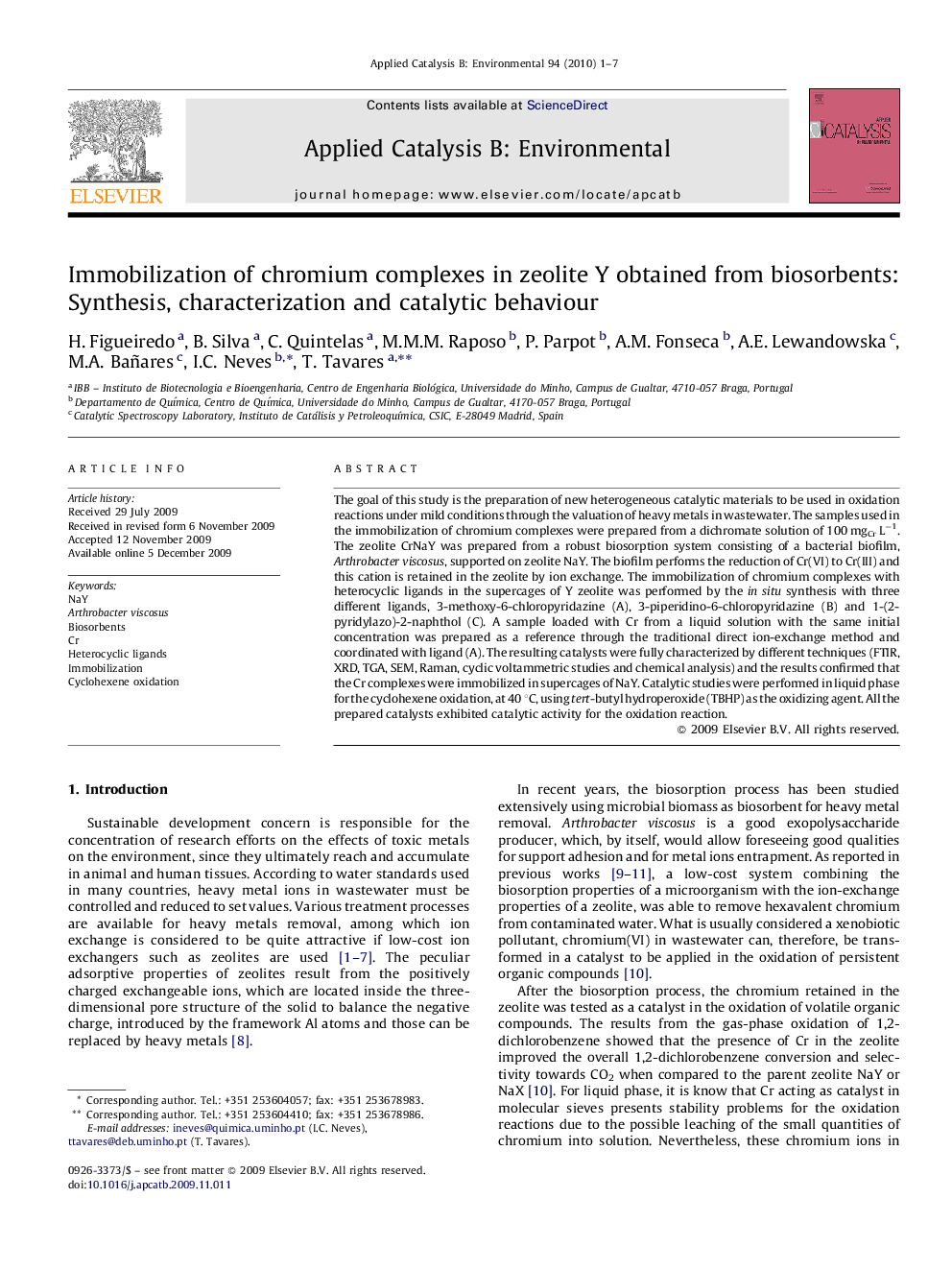| Article ID | Journal | Published Year | Pages | File Type |
|---|---|---|---|---|
| 47410 | Applied Catalysis B: Environmental | 2010 | 7 Pages |
The goal of this study is the preparation of new heterogeneous catalytic materials to be used in oxidation reactions under mild conditions through the valuation of heavy metals in wastewater. The samples used in the immobilization of chromium complexes were prepared from a dichromate solution of 100 mgCr L−1. The zeolite CrNaY was prepared from a robust biosorption system consisting of a bacterial biofilm, Arthrobacter viscosus, supported on zeolite NaY. The biofilm performs the reduction of Cr(VI) to Cr(III) and this cation is retained in the zeolite by ion exchange. The immobilization of chromium complexes with heterocyclic ligands in the supercages of Y zeolite was performed by the in situ synthesis with three different ligands, 3-methoxy-6-chloropyridazine (A), 3-piperidino-6-chloropyridazine (B) and 1-(2-pyridylazo)-2-naphthol (C). A sample loaded with Cr from a liquid solution with the same initial concentration was prepared as a reference through the traditional direct ion-exchange method and coordinated with ligand (A). The resulting catalysts were fully characterized by different techniques (FTIR, XRD, TGA, SEM, Raman, cyclic voltammetric studies and chemical analysis) and the results confirmed that the Cr complexes were immobilized in supercages of NaY. Catalytic studies were performed in liquid phase for the cyclohexene oxidation, at 40 °C, using tert-butyl hydroperoxide (TBHP) as the oxidizing agent. All the prepared catalysts exhibited catalytic activity for the oxidation reaction.
